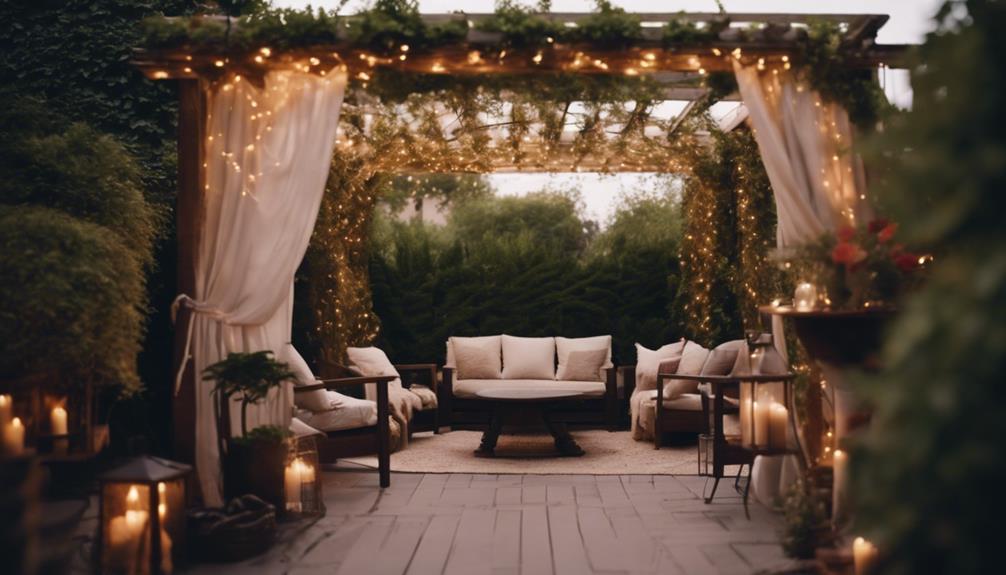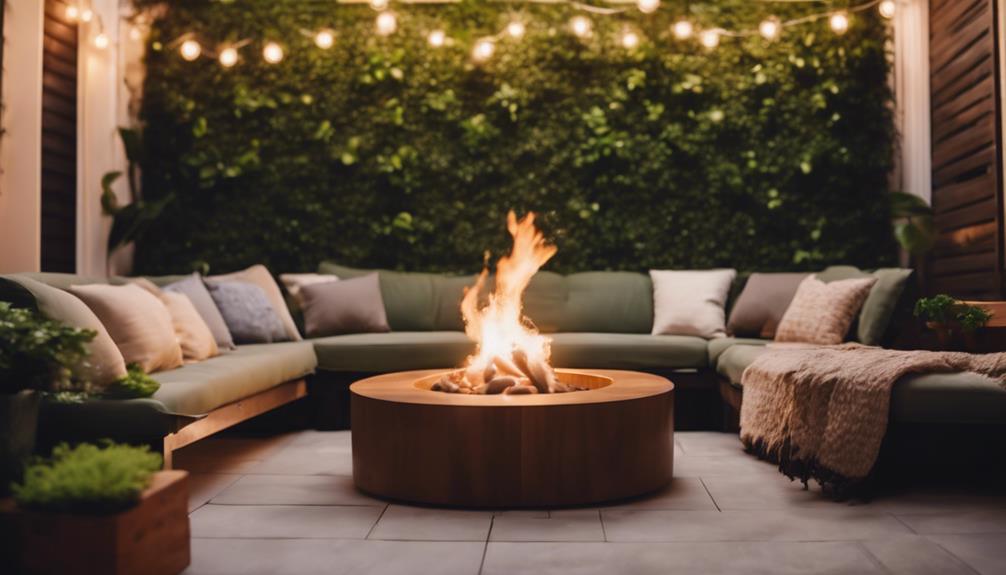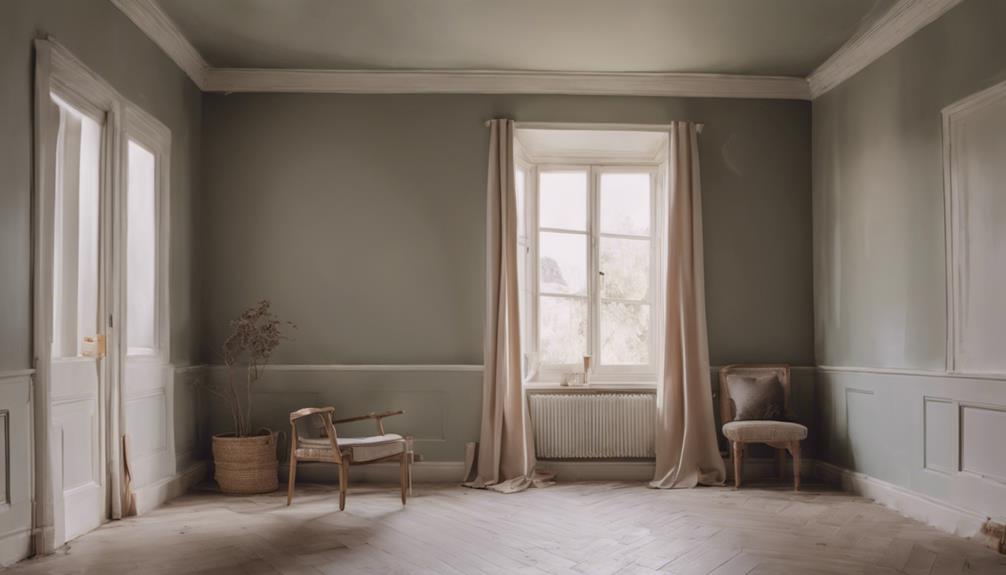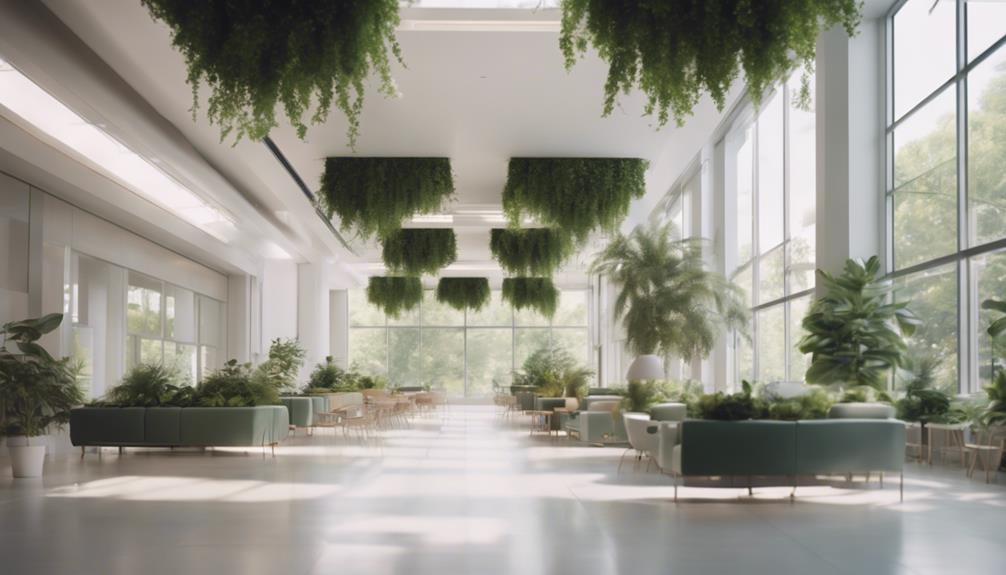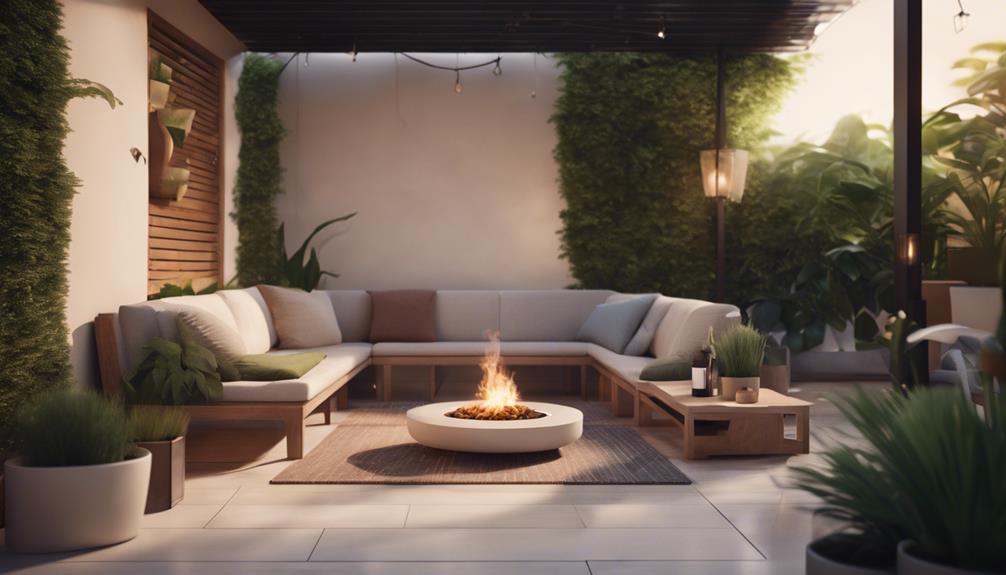When considering enclosing your alfresco, explore various options like blinds, screens, and panorama enclosures for year-round protection and customization. Consider permit needs to comply with building codes and safety standards. Focus on incorporating materials like shade blinds for varied styles and materials, screens for privacy and airflow, or panorama enclosures for durability with aluminum frames and clear PVC options. Calculate the costs involved, ranging from $3,000 to $20,000, for materials, labor, and potential additional expenses like heating and lighting. Design wisely to balance privacy and light, promoting a cozy outdoor ambiance.
Key Takeaways
- Consider varying enclosure options for year-round protection and enhanced outdoor living.
- Ensure compliance with building codes and permits before enclosing.
- Explore materials like blinds, screens, and panorama enclosures for customization.
- Balance privacy and light with adjustable elements like clear bistro PVC blinds.
- Enhance ventilation with louvre screens or bi-fold doors for a comfortable alfresco space.
Benefits of Enclosing an Alfresco
Enclosing your alfresco provides year-round protection from elements like rain, harsh sun, insects, wind, and dust, enhancing your outdoor living experience. By creating a shield against these external factors, you can extend your outdoor living enjoyment regardless of the season. This enclosure not only offers protection but also adds extra living space to your home, increasing its overall value. Furthermore, safeguarding your alfresco area helps in maintaining your outdoor furniture by shielding it from dirt and prolonging its lifespan.
Different types of enclosures such as blinds, screens, and panorama enclosures provide varying levels of protection and customization options, allowing you to tailor the enclosure to your specific needs.
The cozy and inviting space created by enclosing your alfresco area can serve as a perfect setting for relaxation or entertaining guests, ultimately enhancing the ambiance of your outdoor living space.
Considerations Before Enclosure
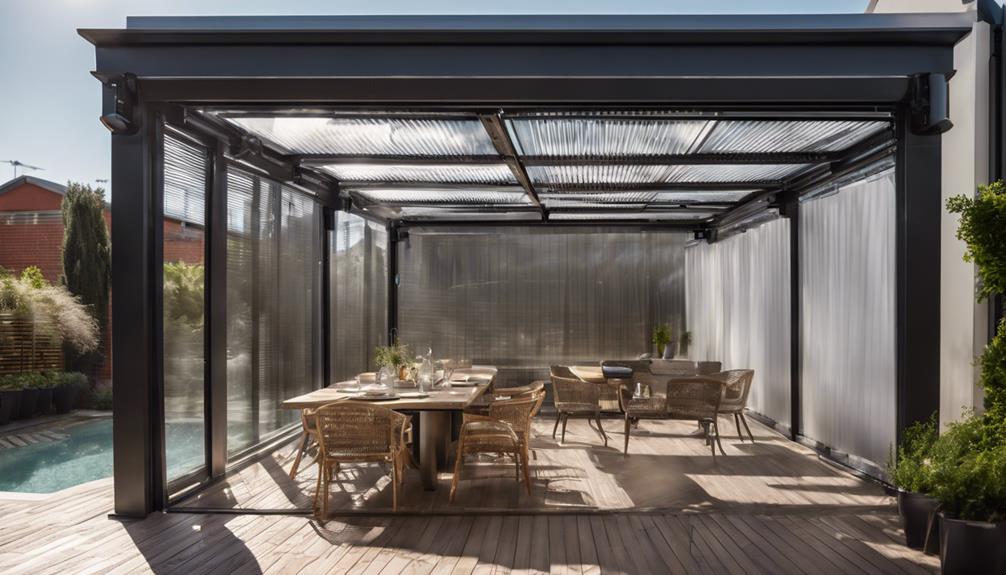
Before proceeding with enclosing your alfresco area, it's important to take into account several key factors to guarantee a successful and compliant transformation.
First and foremost, assess the need for natural light and ventilation in all habitable rooms to make sure that enclosing the alfresco doesn't compromise these essential elements.
It's also vital to check the national building code to prevent blocking small bedrooms with the enclosure, ensuring safety and compliance.
Consider the option of creating a semi-internal courtyard within the enclosed space to maintain adequate natural light and ventilation.
Additionally, explore designs that allow for a dining area connecting the courtyard and rear yard to enhance the functionality of the enclosed alfresco.
Remember to obtain all necessary permits and make sure that any modifications comply with building codes and safety regulations before initiating the enclosure process.
Popular Enclosure Options
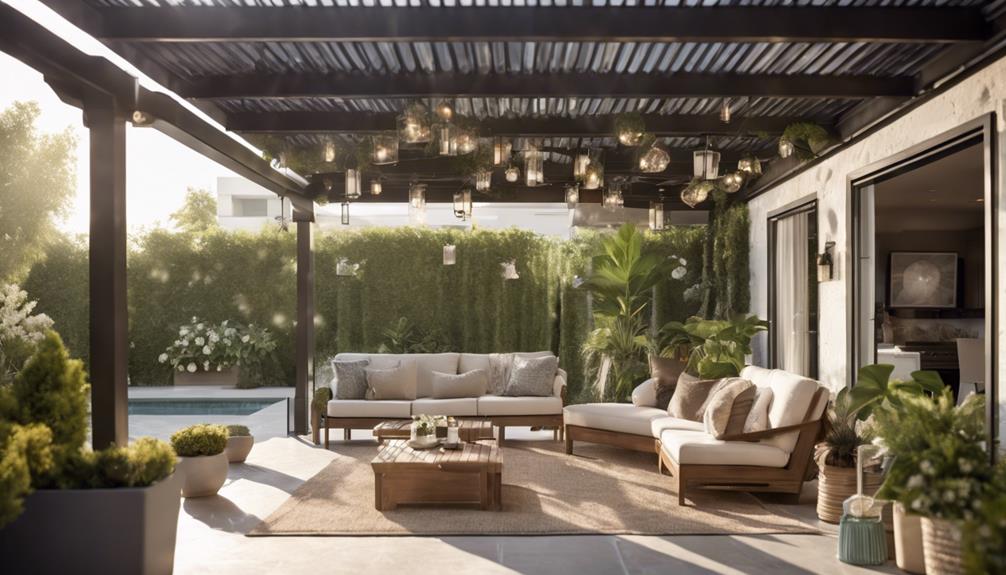
When considering popular enclosure options for your alfresco area, you can explore a variety of materials like blinds, screens, and panorama enclosures.
Blinds offer versatile styles and materials to suit different needs, screens provide fixed alternatives for privacy and airflow, and panorama enclosures offer durable options with bifold, sliding, or fixed hinge doors.
Each option brings unique features and benefits to the table, catering to various aspects such as material choice, functional design, and weather protection considerations.
Enclosure Material Options
Blinds, screens, and panorama enclosures are popular material options for enclosing alfresco areas.
Shade blinds offer a cost-effective solution with a variety of styles and materials to cater to different requirements.
Screens provide a more permanent option for enclosure, featuring choices like static and louvre screens that balance privacy and airflow effectively.
Panorama enclosures stand out for their bifold, sliding, or fixed hinge doors made from sturdy aluminum frames, ensuring long-lasting durability. These enclosures commonly utilize clear or tinted PVC, which maintains clarity without adding unnecessary weight, enhancing the overall aesthetic appeal of the alfresco area.
When selecting an enclosure material, consider factors such as maintenance requirements, longevity, and aesthetic preferences to make sure the chosen option aligns with your alfresco needs seamlessly.
Functional Design Ideas
Consider incorporating versatile screens or panorama enclosures to enhance the functionality of your alfresco area.
Blinds, a popular choice, offer economical solutions with a variety of materials and styles to suit your specific needs.
Screens, on the other hand, provide fixed alternatives for enclosure, giving you the option of privacy while still allowing airflow.
For a more sophisticated look, panorama enclosures featuring bifold, sliding, or fixed hinge doors with durable aluminium frames can be a stylish choice.
By enclosing your alfresco with these options, you can create a private and protected space while still enjoying outdoor views.
Whether you prefer the flexibility of blinds, the sturdiness of screens, or the elegance of panorama enclosures, each option adds a functional element to your alfresco area, allowing you to make the most of your outdoor space throughout the year.
Weather Protection Considerations
Enhance weather protection in your alfresco space with popular enclosure options like screens, blinds, and panorama enclosures. Blinds offer economical solutions, with a variety of materials and styles to cater to different needs.
Screens provide fixed alternatives for protection from the elements, offering options such as static and louvre screens that balance privacy and airflow effectively.
Panorama enclosures, featuring bifold, sliding, or fixed hinge doors with durable aluminium frames and clear or tinted PVC options, are ideal for enhancing weather resistance.
When selecting an enclosure for your alfresco, consider factors such as wind resistance, light transmission, and ease of operation. These elements play an important role in ensuring that your alfresco space remains comfortable and well-protected from external conditions.
Permits and Regulations

Before enclosing your alfresco, it's essential to comply with local regulations and obtain any necessary permits, including a potential Development Application (DA) as required by some councils. Changes in the function of a room, such as enclosing an alfresco, may impact fire ratings and require additional plans.
Adding features like a cooktop under the roofline in an enclosed alfresco must comply with indoor cooking facility rules. Consult with council town planners for detailed advice on DA requirements and compliance with building regulations.
When dealing with permits and regulations for enclosing your alfresco, it's vital to follow these steps:
- Research local regulations thoroughly to understand the specific requirements for enclosing outdoor spaces.
- Contact your local council to inquire about the need for a Development Application (DA) before proceeding with any construction.
- Make sure that any changes you make comply with building codes and safety standards to avoid any potential legal issues.
Alfresco Cooking Guidelines
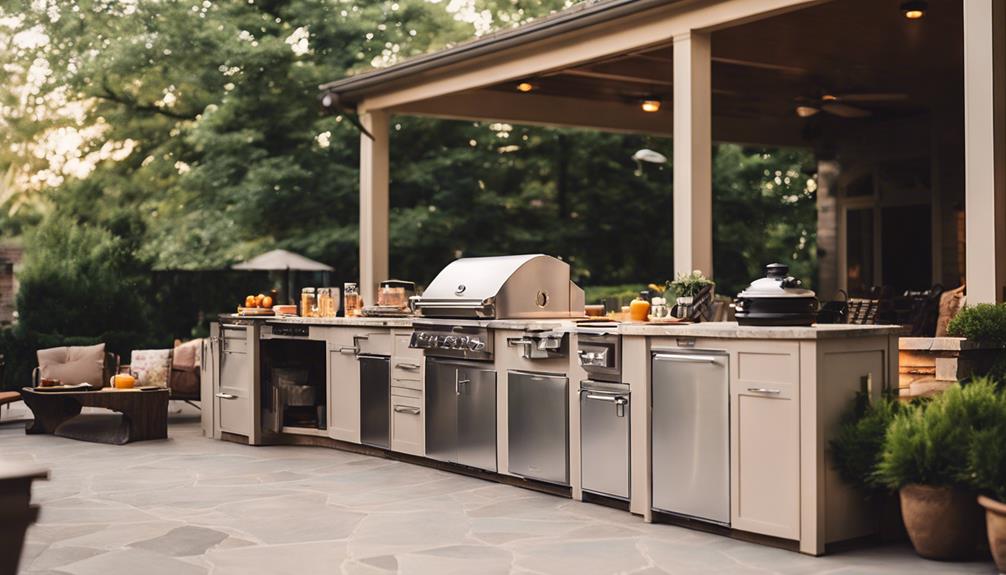
To guarantee compliance with regulations when enclosing your alfresco for cooking, it's important to understand the specific guidelines for alfresco cooking facilities. When adding a cooktop under the roofline in an enclosed alfresco space, it's essential to meet the regulations set for indoor cooking facilities.
Any changes in function, such as installing a cooktop, can impact the room's fire rating, necessitating additional plans to ensure safety and compliance. Consulting with professionals is highly recommended to make sure that the alfresco enclosure adheres to all necessary guidelines and regulations.
Understanding council regulations regarding alfresco cooking facilities is crucial before making any modifications to your alfresco space. By following these guidelines and seeking expert advice, you can create a safe and compliant cooking area in your enclosed alfresco, providing you with a functional space while adhering to all necessary regulations.
Maintaining Openness in Enclosures
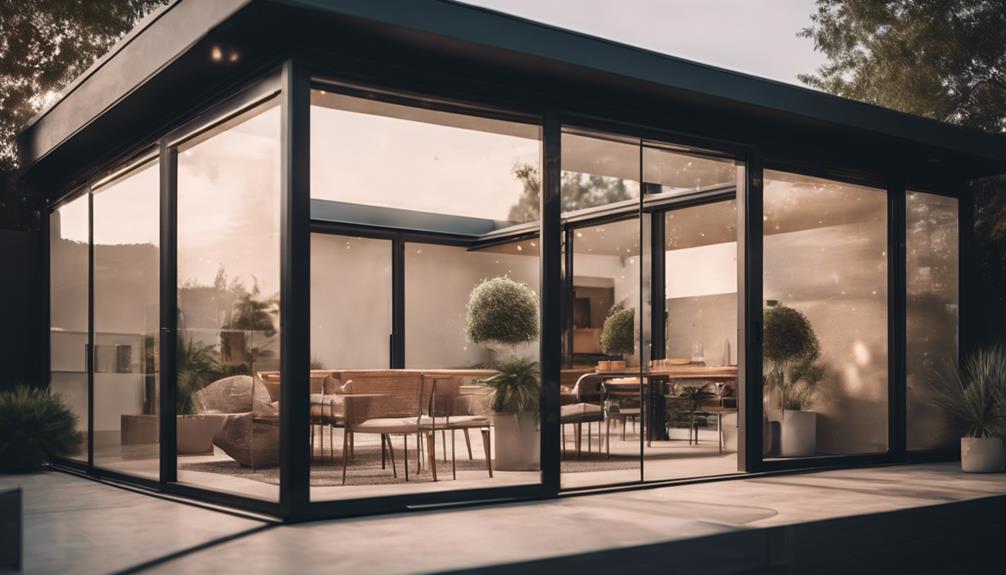
To maintain openness in your alfresco enclosure, consider installing clear bistro PVC blinds that offer protection while still allowing a view of the outdoors.
Balancing privacy and light can be achieved by opting for blinds that provide airflow during hotter months.
Enhancing ventilation options by attaching blinds strategically to posts can help you enjoy the fresh air while preserving the outdoor feel in your enclosed space.
Preserving Outdoor Feel
Consider incorporating clear bistro PVC blinds to maintain visibility and openness in your enclosed alfresco area. Opt for materials like glass or transparent PVC to allow natural light to flow through, preserving the outdoor feel.
Choose an enclosure design with adjustable elements such as sliding doors or louvre screens to control airflow while keeping the space open. To seamlessly blend the indoor and outdoor areas, incorporate bi-fold doors or sliding panels that can be fully opened.
Another option is to attach blinds or screens to posts closer to the fence, creating a boundary while still maintaining an open ambiance in the alfresco space.
Balancing Privacy and Light
Maintain a balance between privacy and light in your enclosed alfresco by strategically selecting materials and design elements that allow natural light to filter through while providing a sense of privacy.
To achieve this, consider using clear bistro PVC blinds, which offer protection while still maintaining openness. Additionally, explore the option of keeping existing shade blinds to guarantee privacy without sacrificing the influx of natural light.
During hotter months, incorporating adjustable blinds or screens is crucial to allow for airflow while preserving privacy. Attach blinds closer to the fence posts to create a secluded atmosphere while enjoying the outdoors.
By carefully choosing materials that permit natural light to penetrate the enclosure, you can strike a harmonious balance between privacy and light, enhancing your alfresco experience.
Enhancing Ventilation Options
Enhance the ventilation options in your enclosed alfresco by installing clear bistro PVC blinds to maintain openness while protecting from the elements.
To maintain airflow during hotter months, consider incorporating adjustable louvre screens or bi-fold doors. Bi-fold doors offer a stylish solution, allowing you to open up the space completely or partially based on your preference.
Additionally, opt for transparent or tinted materials for your enclosures to allow natural light to filter through, creating a bright and airy atmosphere.
By attaching blinds to posts closer to the fence, you can create a sense of openness and connection to the surrounding area.
To strike a balance between ventilation and enclosure in your alfresco space, utilize a combination of fixed and adjustable elements, ensuring comfort and functionality year-round.
Creative Design Ideas
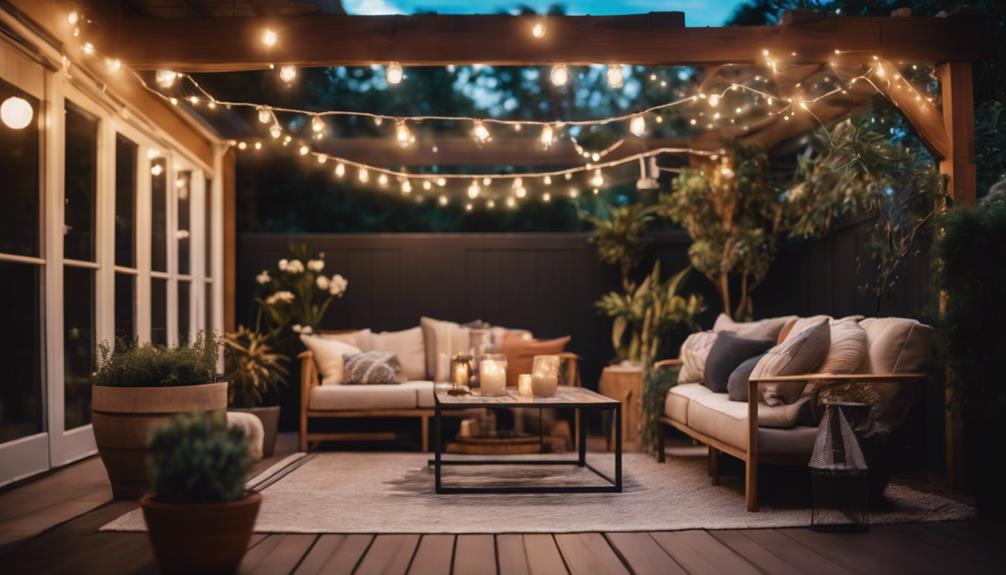
To infuse creativity into your alfresco enclosure, focus on designing a mesmerizing space that seamlessly blends functionality with aesthetic appeal.
Consider creating a dining room between the courtyard and the laundry to optimize your layout for practicality. Enhance this area with lighting and finishes that will create a romantic ambiance during the evening hours.
You can enclose the space off the larger bedroom with a wall to craft a new dining space, adding both privacy and intimacy to your alfresco experience.
Additionally, incorporating practical modifications in the dining area and laundry room won't only boost functionality but also elevate the overall design aesthetic. By focusing on elements that complement the existing structure, you can create a visually appealing space that harmonizes with the surroundings.
Stay mindful of how each design choice contributes to the overall atmosphere and functionality of your alfresco enclosure, ensuring a cohesive and inviting space for relaxation and entertainment.
Lighting and Ambiance Tips
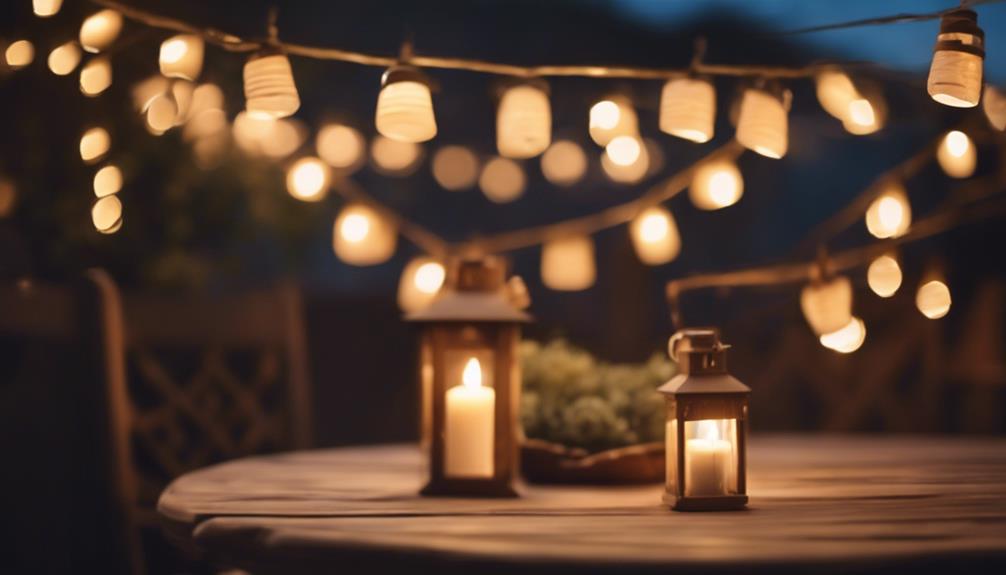
Consider enhancing the ambiance of your enclosed alfresco by incorporating various lighting tips and techniques to create a cozy and inviting atmosphere.
When it comes to outdoor lighting, there are several options you can explore to elevate the mood of your space:
- Install dimmable LED lights to adjust the brightness according to different occasions, providing flexibility in setting the desired ambiance.
- Utilize solar-powered fairy lights or lanterns to infuse a magical and eco-friendly glow, perfect for creating a warm and inviting atmosphere in your outdoor area.
- Incorporate wall sconces or pendant lights to add a touch of sophistication and elegance, enhancing the overall aesthetic appeal of your alfresco space.
Cost Estimates and Budgeting
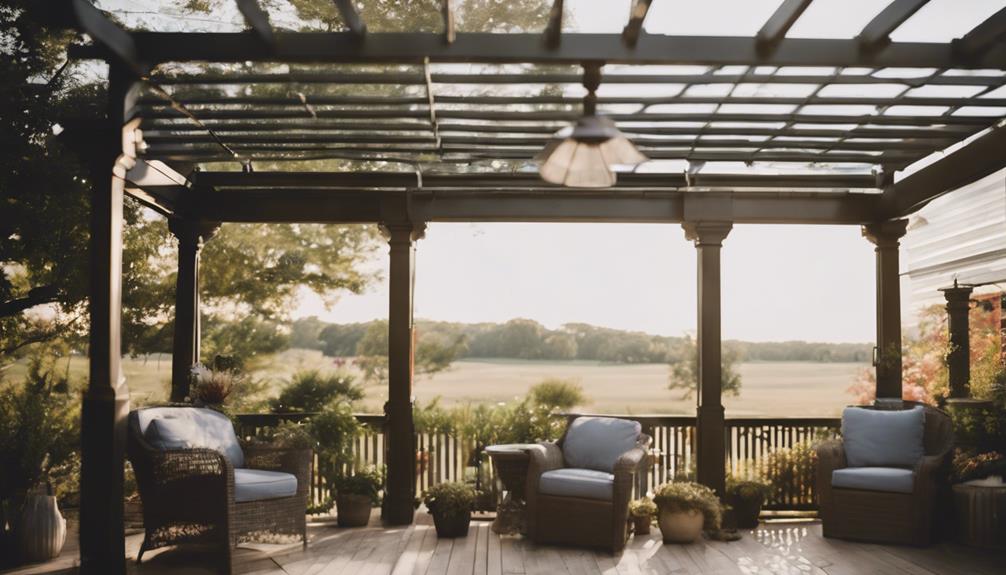
Budgeting for an enclosed alfresco involves accounting for various costs, including materials, labor, permits, and potential additional features. The cost of enclosing an alfresco can vary greatly, ranging from $3,000 to $20,000, depending on the chosen materials and design complexity.
When planning your budget, consider utilizing DIY enclosure kits as a cost-effective option to reduce labor expenses. However, hiring professional builders for the project guarantees quality workmanship and compliance with relevant regulations.
It's crucial to factor in additional expenses for heating, cooling, and lighting when budgeting for your enclosed alfresco space. By carefully evaluating these costs upfront, you can better plan and allocate your budget to create a comfortable and functional enclosed alfresco that meets your needs and preferences.
Remember that investing in quality materials and skilled labor can result in a durable and aesthetically pleasing outdoor living area for you to enjoy for years to come.
Frequently Asked Questions
Can I Enclose My Alfresco?
You can enclose your alfresco to enjoy year-round protection from the elements. Consider using blinds, screens, or panorama enclosures for a cozy outdoor space. Check building codes and consult professionals to guarantee compliance and proper planning.
How Much Does an Alfresco Enclosure Cost?
You're curious about the cost of enclosing an alfresco. Prices can vary from $5,000 to $20,000. Factors like materials and features influence the final bill. Obtain multiple quotes to find the best option within your budget.
What Is the Difference Between a Patio and an Alfresco?
A patio is an open outdoor space next to a house, while an alfresco is a covered area attached to the house with a roof for protection. Alfrescos are more enclosed, designed for outdoor living and entertaining.
How Do I Close off an Outdoor Area?
Looking to close off your outdoor area? Wondering about the best way to do it? Consider installing clear bistro PVC blinds or keeping existing shade blinds. Opt for an enclosure that allows airflow and light to pass through.
Conclusion
To sum up, enclosing an alfresco can provide many benefits such as increased privacy and protection from the elements. Remember to carefully consider regulations and permits before making any changes.
Explore various enclosure options and creative design ideas to make the most of your outdoor space. And don't forget to keep the alfresco cooking guidelines in mind to guarantee a safe and enjoyable experience.
With proper planning and budgeting, you can create a cozy and inviting outdoor space to enjoy year-round.
